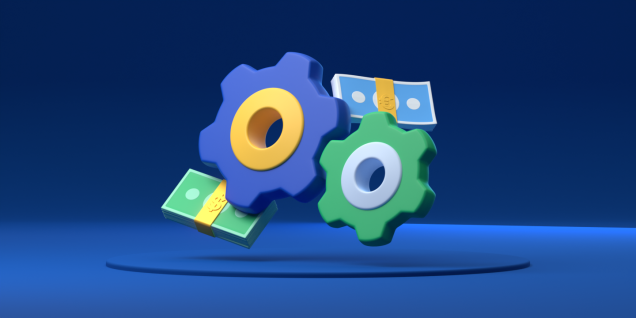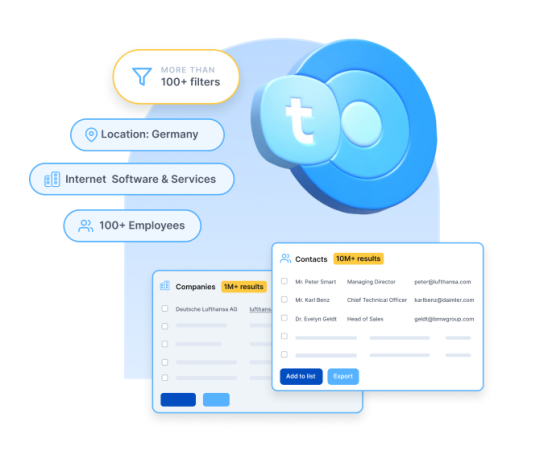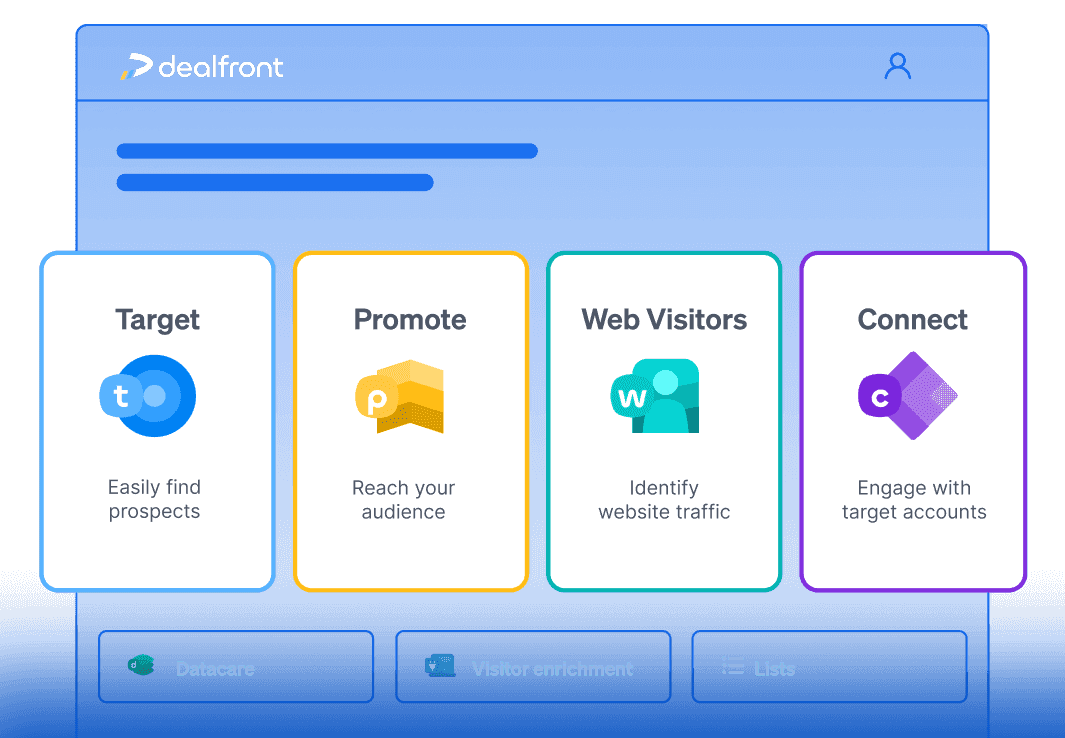94% of employees spend their time on repetitive, time-consuming tasks instead of focusing on the creative and more valuable side of their roles. That staggering number came from a 2021 study conducted by Zapier. If this sounds like your sales team, your pipeline might be completely derailed.
The solution to this problem lies in automating the entire sales pipeline which is your roadmap or the series of steps that represent the journey your prospects take from being a potential customer to a paying one.
By automating the sales pipeline, your sales team can spend more time on what they do best, like:
Nurturing relationships with leads
Crafting compelling B2B sales strategies
Closing deals
So, what are the five key aspects of sales pipeline automation and the tools you can use to boost your sales efforts.
Automating lead capture and entry
You can’t have a successful lead generation process without getting the leads in the first place. Lead capture involves gathering information about potential customers or leads who have shown interest in your brand, products, or services.
Why you need automated lead capture
There are multiple benefits of automating the lead-capturing process, including:
Enhanced efficiency
Let’s say you decide to capture leads from your website manually. You’d first need to monitor your website’s traffic continuously to see who is visiting your site. Then, look for specific actions or behaviors from the traffic that indicate interest. Once you’ve identified potential leads, you would then need to manually collect their contact information, including names, email addresses, phone numbers, etc. Let’s be honest. No one has time for all that!
Thanks to sales automation, you don’t have to be present in front of the customer to capture leads. Automated lead capture tools can collect information about the people or companies who have shown an interest in your offerings. Whether that’s through online forms, website tracking, or interactions with your digital content.
Best of all, these tools can collect data in real time, allowing you to capture leads promptly.
Better data management
When capturing leads manually, it can be easy to overlook or lose important information. But with automation, all the data is securely stored in a centralized location, so your team can easily organize and analyze it. This improves the quality and accuracy of your data, ensuring your sales and marketing teams have all the information needed to make informed decisions.
Also, lead capture generation tools often include data enrichment features, which can help to fill in any missing information. You’ll have a complete picture of your leads at all times.
More qualified leads
By using lead-capturing tools, you can increase the number of qualified leads. These are the leads that fit your ICP (ideal customer profile). The automated systems allow you to score and segment leads based on different criteria, like behavior, demographics, or engagement level. You can then tailor your marketing and sales efforts to specific groups, increasing the number of qualified leads.
Easier Scalability
As your business grows, you need to capture leads from a variety of sources. Different channels attract different audiences, allowing you to reach a broader, more diverse group of potential customers and tap into new markets and demographics.
However, without automation, you may not have the means to track leads from different sources.
An automated system can handle multiple leads from different sources effortlessly. Depending on your tool, you can consolidate leads from multiple channels into a single database. This gives a comprehensive view of your leads and tracks their interactions with your brand.
Tools for automated lead capture
Several tools are available for automating the lead-capturing process.
Leadfeeder by Dealfront helps you identify the companies visiting your website based on their IP addresses and automatically transfer the data to your CRM (customer relationship management) system for easier conversion.
Here’s an example of a Dealfront - CRM integration automation, in this case Salesforce:

Then, just choose if Dealfront should send these companies to Salesforce as accounts or leads.
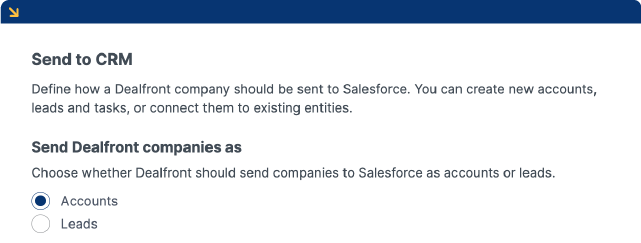
Our tool is so advanced that it can track these companies, even if their employees are working remotely. Most importantly, you can use behavioral and demographic filters to discover the buying intent of these visitors, allowing you to capture only the qualified leads.
Also, Dealfront’s Target helps you build a list of prospects that match your ICP from a database of over 30 million companies. The tool also offers the contact details of key decision makers at those companies so your sales team can reach out to them and convert them into customers.
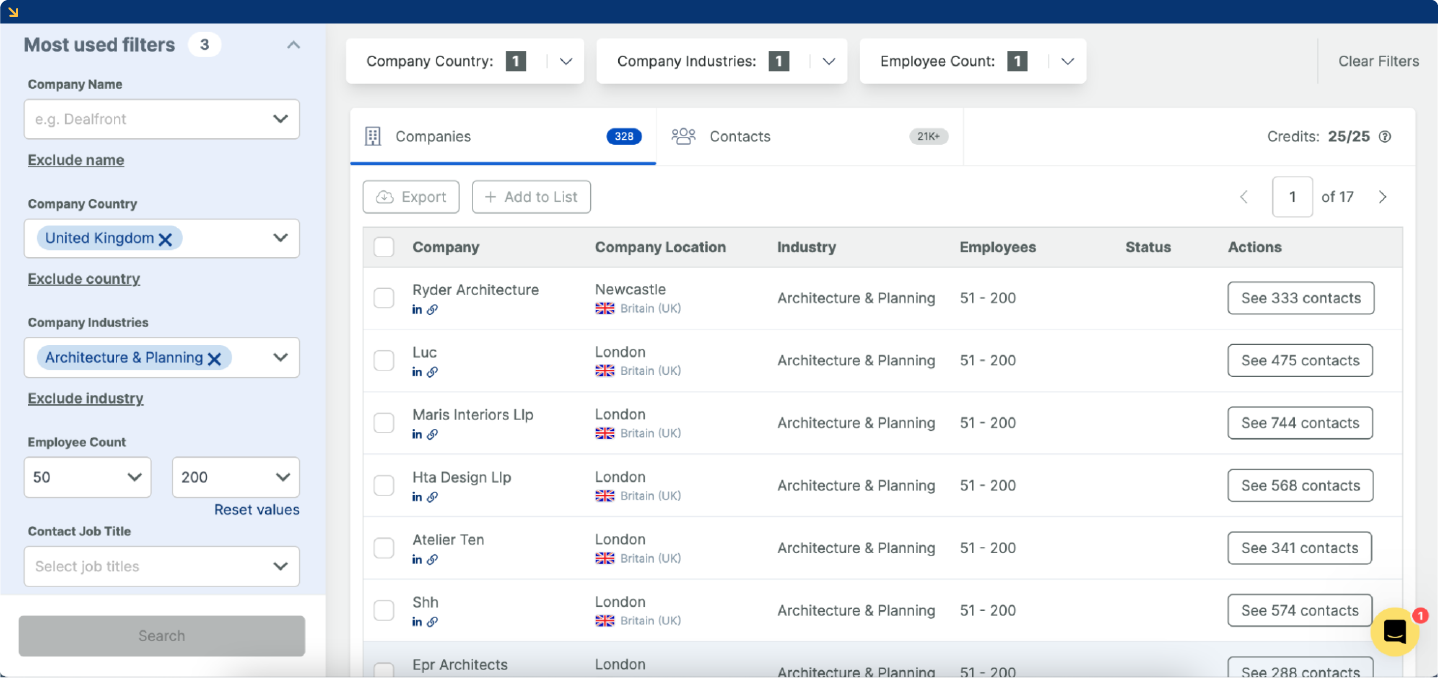
With these tools, finding and capturing the right leads becomes a breeze and not a dreaded activity.
Why it’s important to capture leads in a timely manner
Slow and steady doesn’t win you the race when it comes to capturing leads. The longer you wait, the more likely that one of your competitors will lure the lead and plant the seeds for a stronger client relationship. Research shows that 78% of customers buy from the company that responds to them first.
So, you've managed to attract and capture some good leads. That's great, but it's just the start. Now, you need to nurture and engage them.
Lead nurture and engagement automation
According to Adobe Business, only 4% of the visitors to your website are ready to buy. You are responsible for keeping these leads happy and skillfully guiding them through the sales pipeline until they are ready to purchase. If you are in a sector with a long sales cycle—like the SaaS industry where the average cycle takes 84 days—keeping those leads interested might be a challenge.
That's where lead nurturing and engagement come in.
What are lead nurturing workflows?
Lead nurturing workflows are the processes you use to engage and build relationships with your contacts at every stage of the sales funnel. For example, let’s say you’ve captured leads who visited the pricing page on your website. Lead nurturing, in this case, can involve creating content that educates them about topics related to your offering. With time, you can move them from the awareness stage to decision.
Here are three benefits of implementing lead-nurturing workflows:
1. Helps you to deliver a high-quality experience to your leads
80% of customers say that the experience a company offers is just as important to them as its products or services. A good nurturing workflow helps you track lead behavior and deliver the best content at the right time. When you improve their experience with your brand, they will be more willing to work with you in the future.
2. Helps you to prioritize hot leads
By keeping track of how each lead is doing as they navigate the sales pipeline, you can score and filter them based on various parameters and responses. In the end, you can concentrate on the leads that are ready to convert. Or assign different leads to different sales reps, depending on where they are in the pipeline.
3. Increases brand awareness
In the process of nurturing your leads, you’ll need to share information about your brand, including how your offering differs from other players in the market and how you can improve their business. That way, you can be confident that your solution will be top-of-mind when they are ready to purchase.
How email automation and personalization help with leads
Email automation is powerful for improving engagement and nurturing leads. Here are some of the ways it can help you:
Reach a large number of leads at once using automated email campaigns
Send relevant and personalized emails that match leads’ behavior, interests, and needs
Guide leads through the sales funnel through messages that align with their stage in the buying journey
Track and analyze important metrics like open rates and click-through rates to assess the effectiveness of your campaigns
Re-engage the leads that have gone cold to rekindle their interest in your brand
For email automation to deliver the desired results, your emails need to be personalized. About 62% of customers say they would stray from a brand that delivers non-personalized content.
Here are a few tips to personalize your email content:
Use the recipient’s name or company name in the subject line of your emails.
Make the subject more dynamic through the use of images, videos, or other features that relate to the recipient.
Ensure your email messages are relevant and meaningful.
Segment your email list according to criteria like age, gender, and location, and create email messages that resonate with your audience.
Tools for lead nurturing automation workflows
Here are two common lead nurturing tools:
1. HubSpot
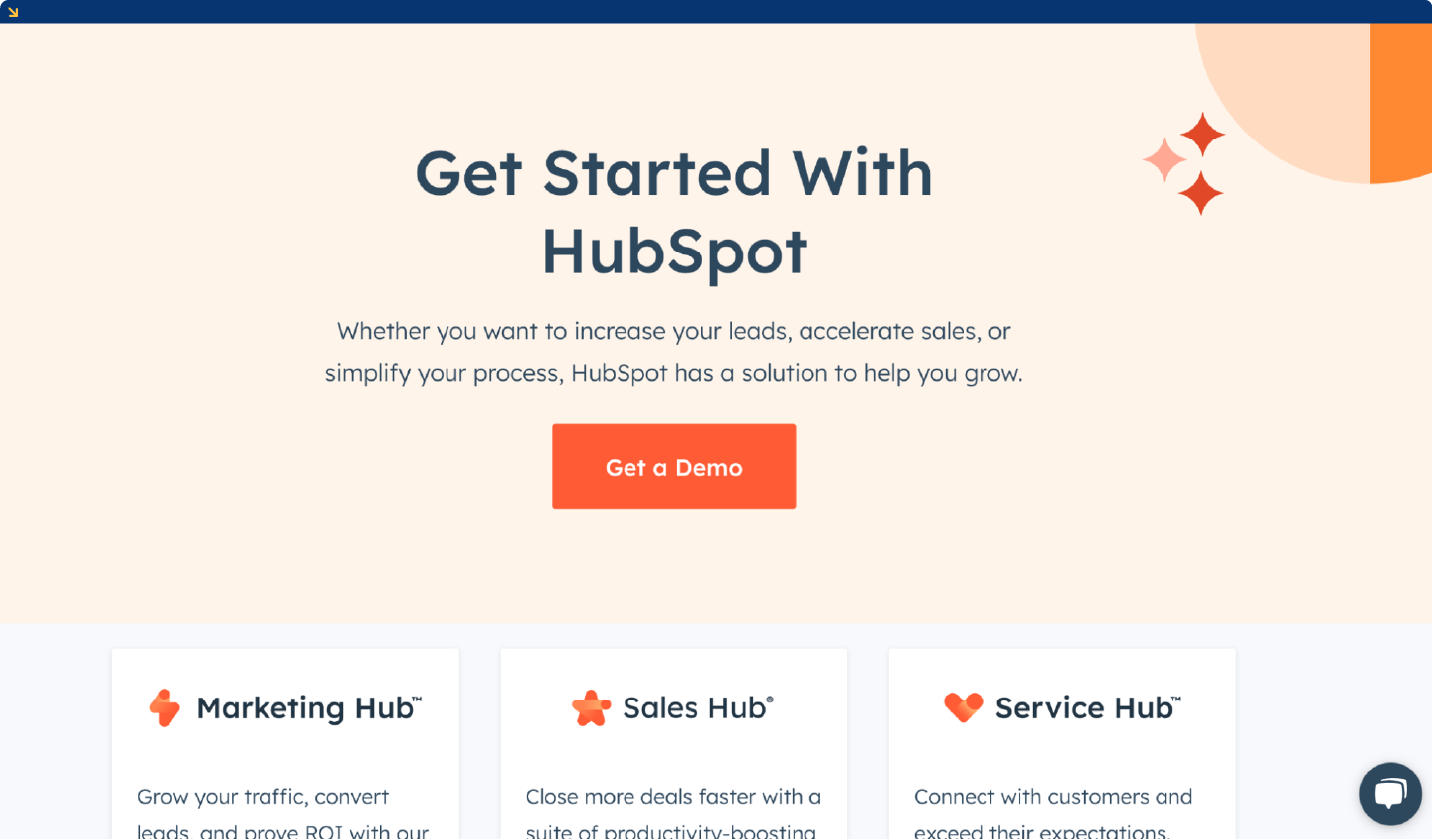
HubSpot is a marketing automation platform that provides a variety of tools for lead nurturing and customer relationship management. You can create targeted outreach and send marketing emails based on your leads’ behavior. You can also schedule personalized emails to reach a prospect at the right time.
2. Keap

Keap is a lead nurturing platform that forms different groups for your leads as soon as they complete the contact forms. From there, the platform will send them timely messages based on their actions.
Once you’ve automated your lead nurturing processes, the next step is to assign tasks and manage follow-ups.
Follow-up and task management automation
Sales teams constantly deal with a large number of leads, inquiries, and ongoing customer interactions. Unfortunately, trying to juggle multiple leads and tasks simultaneously can do more harm than good.
Manual task management challenges
Here are some of the ways manual task management can impact a team in a busy sales environment.
Communication flow issues
If your sales team is losing time handling all tasks manually, they’ll probably have communication flow issues. The time they’re losing because they have to manually review inquiries means they have less time to reply to a lead's question.. This poor communication flow can lead to a confusing experience for leads and even damage business relationships.
Poor lead prioritization
Your sales team may not have the means to track lead activity manually, making it difficult to identify leads that require urgent attention, or those that are likely to convert. They may even end up treating both qualified and unqualified leads equally.
High stress levels
The constant pressure to manually handle all administrative tasks can cause high stress among your sales reps. This can impact job satisfaction and sales productivity.
How automation can help with task assignments and follow-up reminders
Here are some of the ways automation tools can help you assign tasks and manage follow-up reminders.
Establish routing rules
Automation tools can help you set up rules for how leads will be distributed among your sales team members. For example, leads from a specific industry can be assigned to a sales member with expertise in that field.
Score leads
Automation tools can monitor lead activity and assign scores based on their behavior and engagement. Leads who are likely to convert can have higher scores and be assigned to specific sales reps to ensure the opportunities aren’t missed.
Drop dead leads
A lead is dead when they have made it clear that they aren't interested in your offering. Using automated tools, you can remove all the dead leads from your pipeline. This way your sales team doesn't waste its efforts on leads that won't buy from you.
Schedule follow-up sequences
Automation tools can help you create and schedule follow-up sequences, such as predefined tasks and reminders. These sequences help the sales reps to follow up with leads at specific intervals, increasing the chances of conversion. Research shows it takes about five to eight follow-up touches, on average, to generate a conversion.
Here are other benefits of having automated follow-up processes:
Helps to progress leads through the sales pipeline more quickly
Keeps the leads engaged throughout their buying journey
Builds stronger customer relationships because leads can see you are responsive and proactive in addressing their needs
Follow-up and task management tools
There are multiple task management tools in the market. But let’s focus on these two:
Trello

Trello simplifies follow-up and task tracking. It features a card-based system that lets you create boards, lists, and cards to organize tasks visually. It also comes with other features like due dates and labels that can help to keep your sales team on the same page.
Asana

Asana has robust features for task management and streamlining follow-up. Using this tool, you can assign tasks, set deadlines, and even monitor progress effortlessly. You can also integrate it with time-management tools to time-track your tasks.
Next, you need to send proposals and quotes.
Sales proposal and quote automations
Proposals and quotes are a vital cog in the sales cycle. However, manually drafting and sending them to your prospects can be time-consuming and tiring. That brings the need for automated templates.
Benefits of automated templates
Here are two important reasons why automating templates is critical for a healthy sales pipeline:
1. It saves time
Thanks to automation, you don’t have to spend valuable time creating sales proposals and quotes manually. You can get your quote or proposal to your prospect sooner to show that you respect their time.
2. It helps with branding
By using automated templates, you�’ll be consistent in how you present your quotes and sales proposals. Consistent branding increases trust and boosts your reputation in the eyes of your leads and prospects. The best part is, your quotes and proposals are likely to look cleaner and crisper with automation processes.
However, for there to be consistent branding, it means there has to be standardization of templates. This involves:
Using the same format for templates (headings, margins, page layouts, font, font sizes)
Maintaining a consistent visual identity (logos, color schemes, etc.)
Ensuring the messaging is consistent
Defining a consistent set of data fields for client information
Tools to automate sales proposal and quote generation
Here are two tools you can use to automate your proposals and quotes:
Proposify

Proposify is an interactive tool that allows you to create templates for your quotes and proposals. The tool will notify you when a recipient opens, reads, or interacts with the proposal so you can make the necessary follow-ups.
Qwilr

Qwilr allows you to create interactive and responsive quotes and proposals for your prospects. You can make the documents more engaging by embedding images, videos, calendars, Google maps, and other content types.
Sales performance and reporting automation
Traditionally, sales teams relied on intuition to drive sales. You know, if your gut tells you it’s right, then it’s right.
However, relying on gut instinct to make sales decisions doesn't work today. Due to competitiveness in today's market and the rising costs of acquiring new customers, businesses need to make data-informed decisions.
The importance of data-driven insights for the pipeline
Below are some of the ways that using data-driven insights can benefit your sales efforts:
Improving sales efficiency
Data-driven insights shed light on inefficiencies within your sales processes. For example, you can identify areas where the sales cycle is unnecessarily prolonged, or where leads are getting stuck. You can then implement process improvements and automation, which ultimately lead to better sales efficiency and a healthier sales pipeline.
Improving productivity and profitability
By getting data insights into the sales team's performance, market trends, and customer behavior, you can make data-driven decisions that improve your productivity. Indeed, research by McKinsey & Company confirms that companies that embrace data in their operations and sales processes enjoy increased productivity and profitability.
Minimizing Waste
Sales teams often run on limited resources, including time and budget. Using data-driven insights, you can allocate your resources more effectively by directing them toward activities that yield results.
Allowing you to optimize for the future
When you prioritize data-driven decision making, you regularly analyze sales data, market trends, and the latest advancements in your industry. This allows you to adopt proactive strategies and leverage emerging technologies to stay ahead of the competition. With continuous sales funnel optimization, your business will not only thrive now but in the future.
Sales performance and reporting automation tools
InsightSquared

InsightSquared provides powerful revenue analytics and sales forecasting solutions in a flexible, easy-to-use platform. You can use this tool to make precise sales forecasts and enhance sales operations. It also features data quality monitoring and analytics reporting features.
Salesforce

Salesforce provides a centralized platform for lead tracking, sales forecasting, sales management, and performance analytics. Its reporting tool, Tableau, allows you to easily create custom visualizations and dashboards, so you can better understand your data.
Embrace Automation for Sales Success
Automating your sales pipeline processes is the secret to unlocking sales efficiency and productivity, and ultimately closing more deals.
There are various automated tools for each stage in the sales pipeline. However, all tools aren’t created equally so study your options to see which ones best serve the needs of your business.
The sales landscape keeps evolving so be agile and open to new automation tools and strategies. That way you’ll always be able to continuously optimize your sales pipeline. Also, remember that automation isn't about replacing the human touch in sales—it's about enhancing it. Integrating sophisticated sales automation software can empower your team to focus on building relationships while streamlining repetitive tasks for greater effectiveness.
